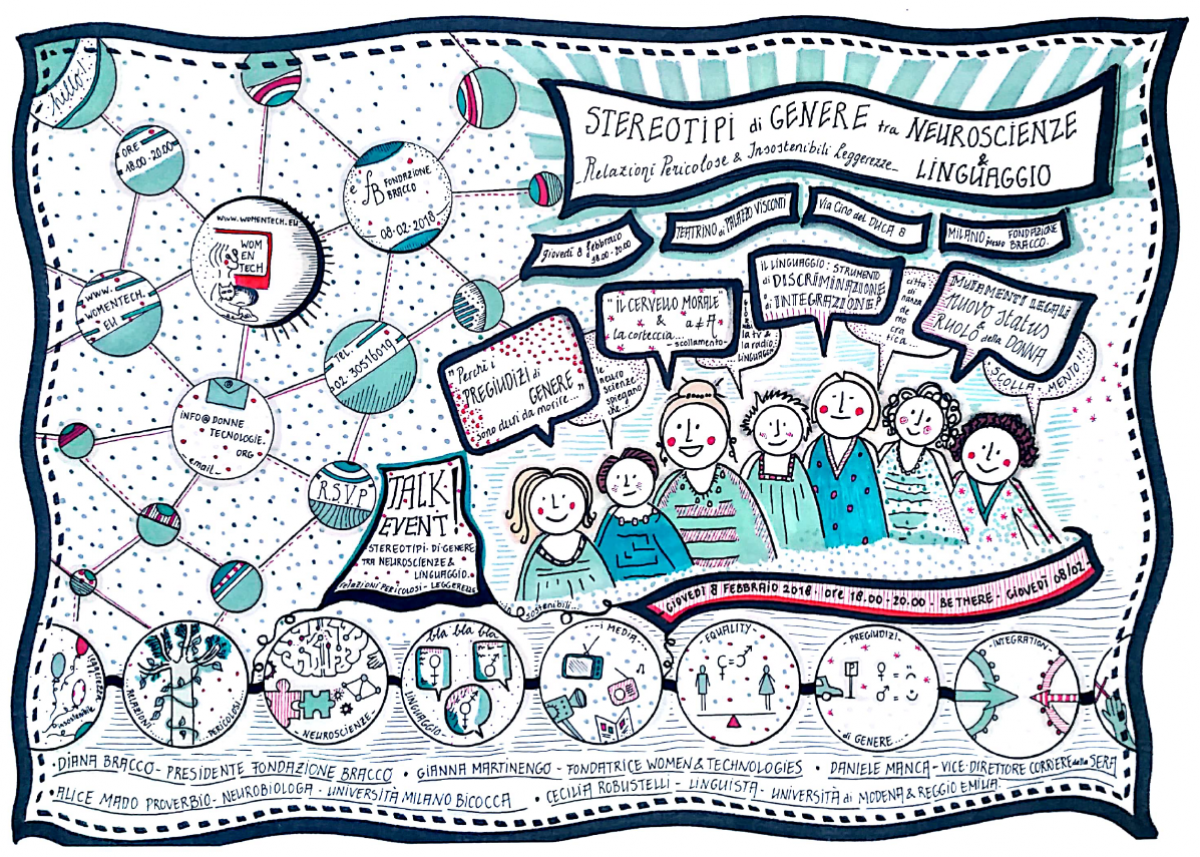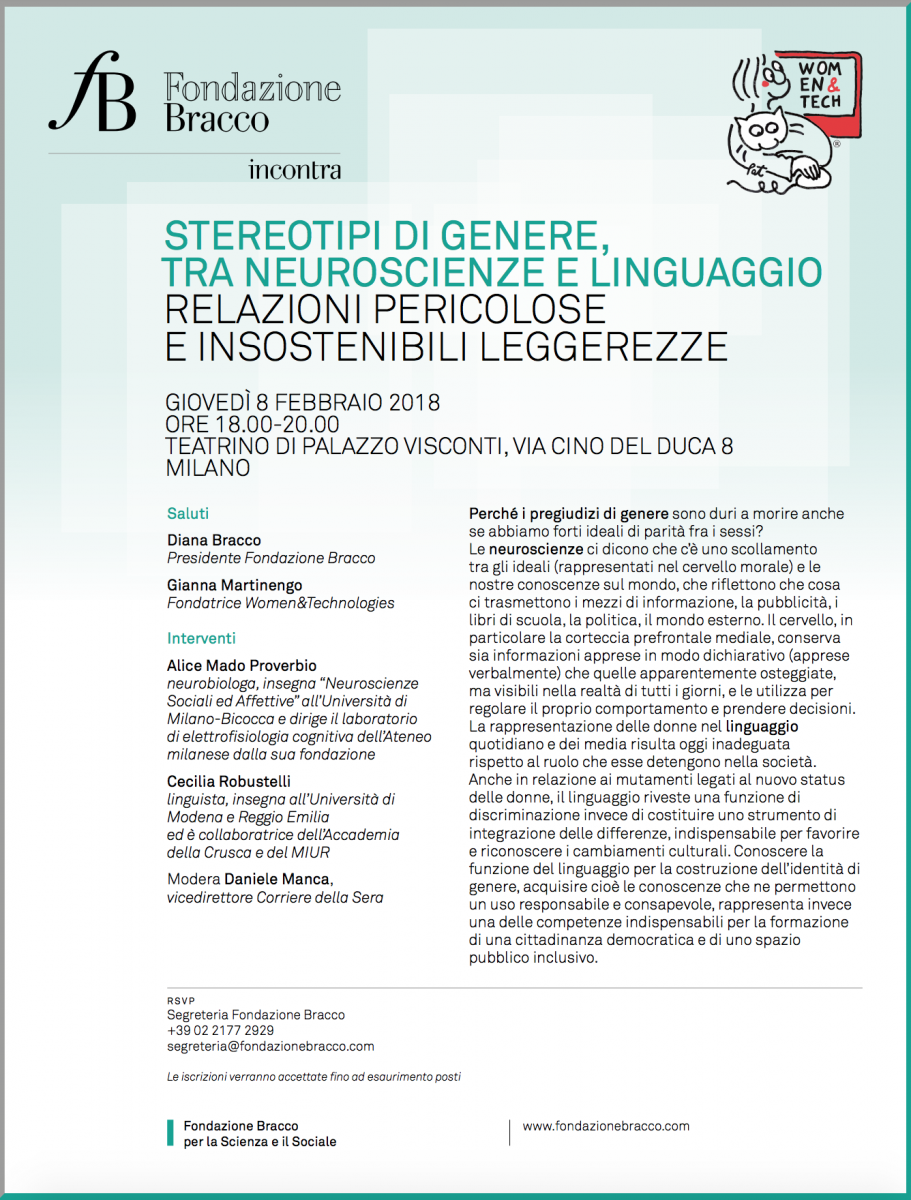
Dangerous relationships and unsustainable lightness
 Why are gender biases hard to die even though we have strong ideals of gender equality?
Why are gender biases hard to die even though we have strong ideals of gender equality?
Neuroscience tells us that there is a disconnect between ideals (represented in the moral brain) and our knowledge of the world, which reflects what is transmitted to us by the media, advertising, school books, politics, the external world. The brain, in particular the medial prefrontal cortex, retains both declarative information (learned verbally) and seemingly opposed information, visible in everyday reality, and uses it to regulate its own behavior and make decisions.
The representation of women in everyday language and the media is inadequate today compared to the role they hold in society.
Even in relation to changes related to the new status of women, language serves a discriminatory function instead of being a tool for integrating differences, essential for promoting and recognizing cultural changes. Understanding the function of language in the construction of gender identity, acquiring the knowledge that allows for responsible and conscious use of it, represents one of the essential competencies for the formation of a democratic citizenship and an inclusive public space.

-
Greetings
-
Diana Bracco
President of the Bracco Foundation -
Gianna Martinengo
Founder Women&Technologies
-
Diana Bracco
-
Interventions
-
Alice Mado Proverbio
Neurobiologist, teaches "Social and Affective Neuroscience" at the University of Milan-Bicocca and directs the cognitive electrophysiology laboratory of the Milanese University since its foundation -
Cecilia Robustelli
Linguist, teaches at the University of Modena and Reggio Emilia and collaborates with the Accademia della Crusca and the MIUR
-
Alice Mado Proverbio
-
Moderate
-
Daniele Manca
Deputy Editor Corriere della Sera
-
Daniele Manca
To sign up, contact the Secretariat of Fondazione Bracco (02 2177 2929 - segreteria@fondazionebracco.com ). Registrations will be accepted until places are filled.
Program
Discover the full event schedule, session times, topics, and keynote speakers.
Alice Mado Proverbio , Neurobiologist, teaches "Social and Affective Neuroscience" at the University of Milan-Bicocca and directs the cognitive electrophysiology laboratory of the Milanese University since its foundation.
Gender biases are hard to die even if we have strong ideals of equality between the sexes and we are not at all "sexist". Why? Neuroscience tells us that there is a disconnect between ideals (represented in the moral brain) and our knowledge of the world, which reflects what the media, school, and the external world transmit to us. Why do we still feel a sense of surprise (however pleasant) when we learn information that violates common gender stereotypes (for example, that the commander of the armed forces is a woman)? A key role in this sense is played by the medial prefrontal cortex, which represents prejudices, including gender ones.
Why is it important to check for implicit gender biases in advertisements, school books, words used by political leaders, authorities, role models, teachers, and parents?
Because it is not just about what is taught verbally, but also about what is shown through example, iconography, clothing, body language, customs, cinematic content, and unconscious habits that we adopt. Neuroscience tells us that the brain learns and retains both declarative information (learned verbally) and seemingly opposed information visible in everyday reality, using them to regulate behavior and make decisions. To build an identity and shape our aspirations, our securities and weaknesses, the sense of who we are. If the female figure is constantly portrayed as delicate and docile, lacking strength and managerial abilities, this information will become part of the semantics, just as the notion that ice is cold and fire is hot.
In our laboratory, we are able to measure the brain's bioelectrical responses to prejudice in individuals who are entirely progressive and have ideals of equality, highlighting how the semantics distorted by prejudice, once settled early on, have deep roots in our brain. But this can be changed.
Cecilia Robustelli, Linguist, teaches at the University of Modena and Reggio Emilia and collaborates with the Accademia della Crusca and the MIUR.
The representation of women in contemporary society appears inadequate to the new role they have taken on since the second half of the last century. Everyday language and the media only occasionally recognize the presence of women, giving them a stereotyped image linked to cultural models of the past, thus identifying and at the same time reinforcing a culture that resists change and is becoming intolerant. Language then no longer fulfills the function of a powerful tool for the inclusion and integration of differences, essential for promoting and recognizing cultural changes, including those related to the new status of women, but of discrimination, paving the way for gender-based violence. Understanding the function of language in the construction of gender identity, acquiring the knowledge that allows for responsible and conscious use of it, represents one of the essential skills for the formation of a democratic citizenship and an inclusive public space, capable of embracing differences, from gender to cultural, linguistic, and sexual orientation, without turning them into diversities.



